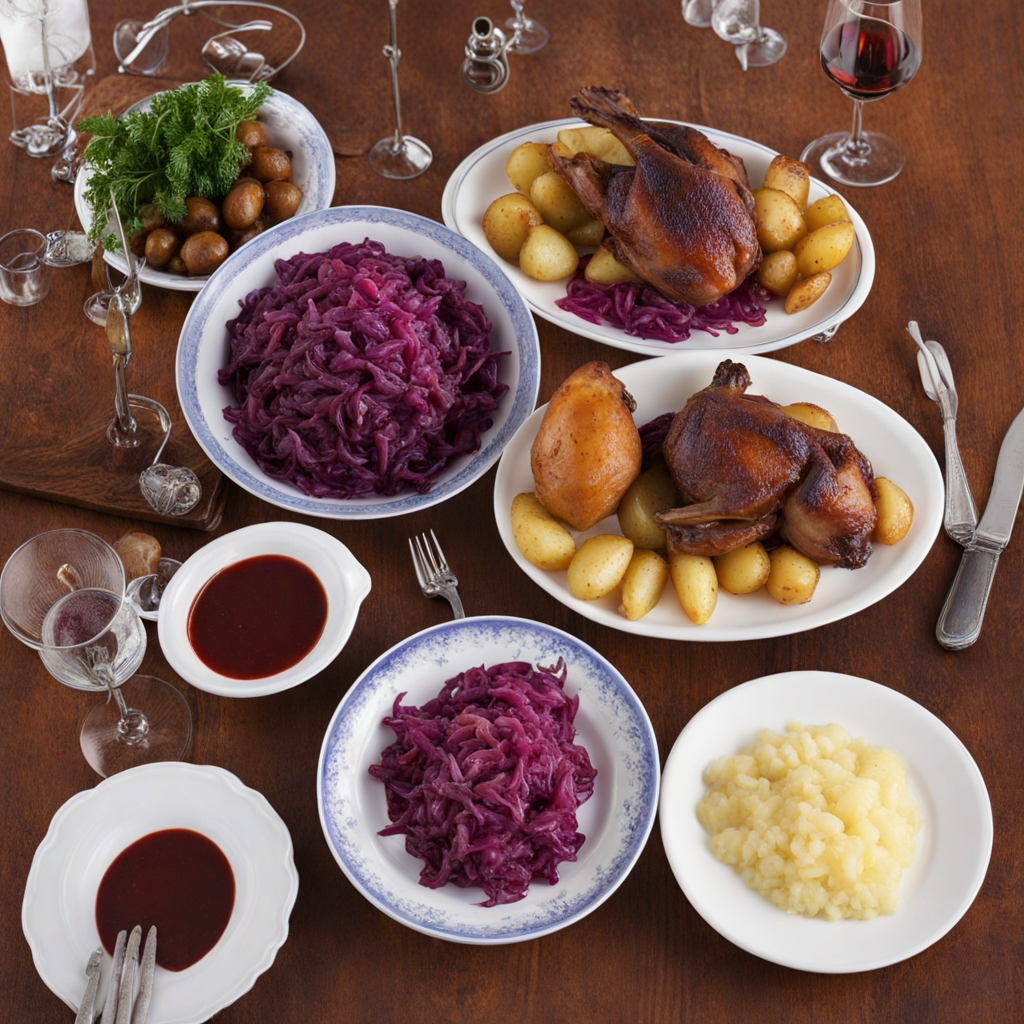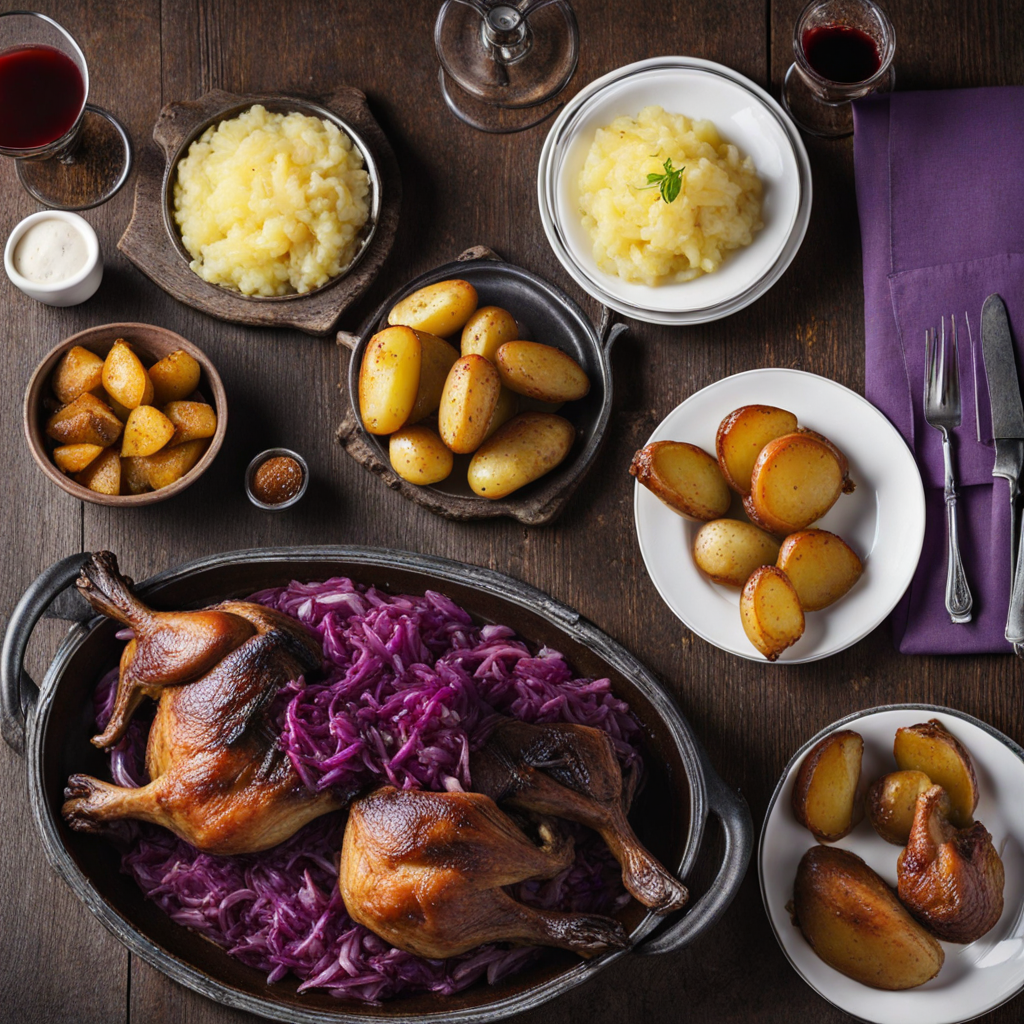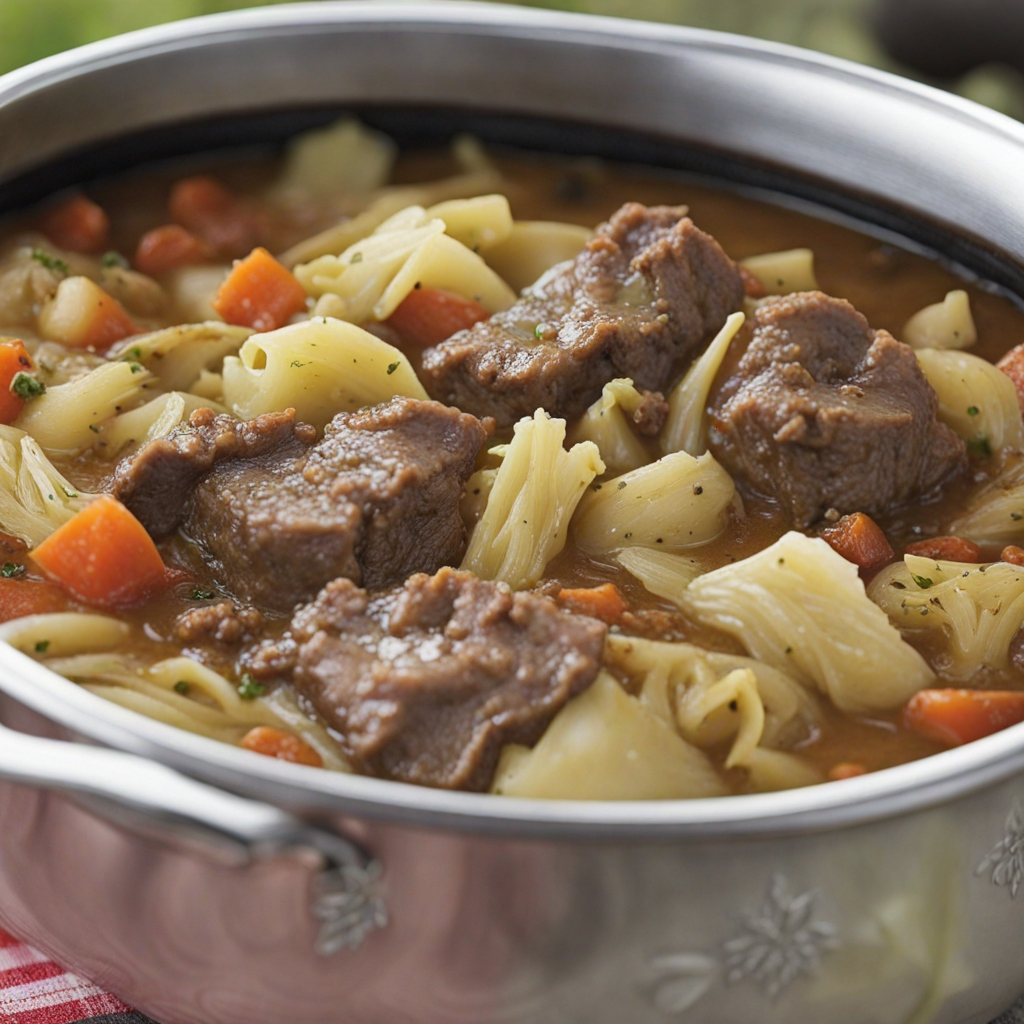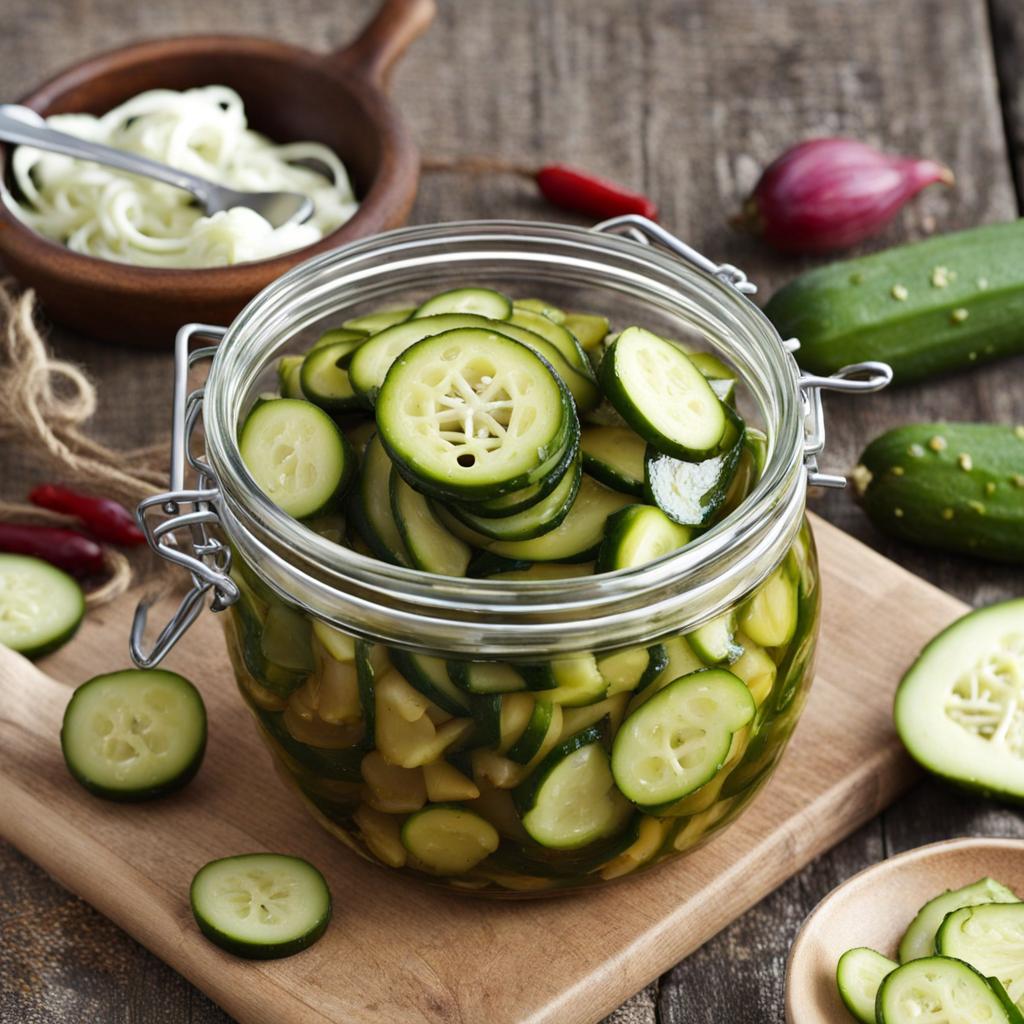Andesteg
Andesteg, a traditional Danish dish, is a succulent roast duck that embodies the rich culinary heritage of Denmark. The preparation begins with a whole duck, typically seasoned with a blend of salt, pepper, and various herbs, which enhances its natural flavors. The duck is then slowly roasted until the skin becomes crispy and golden brown, while the meat inside remains tender and juicy. This slow cooking process allows the fat to render out, basting the meat in its own juices, resulting in a delightful contrast between the crispy skin and the moist, flavorful flesh. The dish is often served with a variety of accompaniments that elevate the dining experience. Classic pairings include caramelized potatoes, red cabbage, and a rich gravy made from the drippings of the duck, which adds depth and complexity to each bite. The sweetness of the caramelized potatoes complements the savory richness of the duck, while the tangy red cabbage provides a refreshing counterbalance. Many families also enjoy serving Andesteg during festive occasions, making it a centerpiece for gatherings and celebrations. Andesteg is not just a meal; it’s an experience that brings people together around the table. The aroma of the roasting duck fills the kitchen, creating an inviting atmosphere that sets the stage for shared stories and laughter. As you carve into the duck, the anticipation builds, and the first bite reveals a symphony of flavors that are both comforting and indulgent. Whether enjoyed during holiday feasts or a cozy dinner, Andesteg is a testament to Denmark’s culinary tradition and a delicious way to explore the tastes of this Northern European gem.
How It Became This Dish
The Delicious Journey of Andesteg: A Danish Culinary Tradition Andesteg, or roast duck, is not merely a dish in Denmark; it is a culinary emblem steeped in history, culture, and tradition that reflects the Danish connection to nature, family, and celebration. Originating from the rural landscapes of Denmark, this dish has evolved over the centuries, becoming a staple during festive occasions and a symbol of Danish hospitality. #### Origins of Andesteg The practice of roasting ducks can be traced back to the medieval period in Denmark, where wild ducks were abundant in the wetlands and lakes that dot the landscape. The term "and" in Danish translates to "duck," while "steg" means "roast" or "roasted." Historically, ducks were hunted and served on special occasions, reflecting the agrarian lifestyle of early Danes who relied on the land for sustenance. During the Middle Ages, the nobility began to elevate the preparation of duck dishes, incorporating spices and techniques learned from trade routes that connected Denmark to Europe. The roasting method was refined, making the skin crispy and the meat tender. As hunting became a sport for the elite, and duck began to be seen as a delicacy, its preparation and presentation grew more sophisticated. #### Cultural Significance By the 19th century, Andesteg had firmly established itself as a traditional dish associated with Denmark's festive seasons, particularly Christmas. The meal is often shared during family gatherings, symbolizing togetherness and abundance. In Danish culture, food is a critical component of social gatherings, and Andesteg has become a centerpiece of holiday celebrations. The dish is typically served with caramelized potatoes, red cabbage, and a rich gravy, encapsulating the flavors of the season. Caramelized potatoes, with their sweet and buttery glaze, complement the savory richness of the duck, while red cabbage adds a tangy contrast that cuts through the fat. This combination is not merely for taste; it represents the agricultural bounty of the Danish landscape, tying the meal to the country's rural roots. During Christmas, Andesteg is often accompanied by a traditional dessert, such as risalamande—rice pudding with almonds, served with cherry sauce. This combination creates a festive atmosphere that is both nostalgic and celebratory, evoking memories of childhood and family traditions. #### Development Over Time As Denmark entered the 20th century, Andesteg continued to evolve. The advent of modern agriculture and poultry farming made ducks more accessible to the general population. No longer confined to the dining tables of the wealthy, Andesteg became a beloved dish among all social classes. The post-World War II era saw a return to traditional foods as people began to appreciate the importance of local and seasonal ingredients. The rise of the New Nordic cuisine in the early 21st century, led by influential chefs like René Redzepi of Noma, further revitalized the interest in traditional Danish foods, including Andesteg. Chefs began to experiment with traditional recipes, adding contemporary twists while still honoring the dish's heritage. For instance, some might incorporate local herbs or unique marinades, elevating the duck to new culinary heights while maintaining its essence. The preparation of Andesteg has also seen a shift towards sustainability, with an increased emphasis on sourcing ducks from local farms that practice ethical and sustainable farming methods. This aligns with the broader movement within Denmark towards sustainable eating, reflecting a growing consciousness about food sources and environmental impact. #### Modern Celebrations and Variations Today, Andesteg is not only a holiday staple but also a dish enjoyed at various celebrations, including birthdays and special family gatherings. In contemporary Denmark, the rise of home cooking and interest in traditional recipes has led to a resurgence in making Andesteg from scratch. Many Danish families have their own treasured recipes, often passed down through generations, which may include secret spice blends or marinating techniques. Regional variations of Andesteg also exist, showcasing Denmark's diverse culinary landscape. For example, some regions may prefer a spiced apple stuffing, incorporating local fruits to enhance the dish's flavor profile. Others may experiment with different side dishes, reflecting the evolution of Danish palates and dietary preferences. In urban areas, Andesteg has also found its way onto restaurant menus, often presented as a fine dining experience. Chefs have taken the traditional preparation to new heights, pairing the dish with a curated selection of wines and side dishes that enhance the overall dining experience. This evolution highlights the versatility of Andesteg, allowing it to maintain its relevance in a rapidly changing culinary landscape. #### Conclusion The history of Andesteg is a testament to Denmark's rich culinary heritage and the enduring importance of food in cultural identity. From its medieval roots to its status as a beloved festive dish, Andesteg embodies the spirit of Danish hospitality, celebration, and community. As it continues to evolve, embracing modern cooking techniques and sustainable practices, Andesteg remains a delicious link between the past and the present—a dish that not only nourishes the body but also the soul, bringing families and friends together in celebration of shared traditions and memories. In the end, Andesteg is not just a roast duck; it is a flavorful narrative of Danish culture that continues to be written with every gathering, every family recipe, and every joyous celebration.
You may like
Discover local flavors from Denmark







